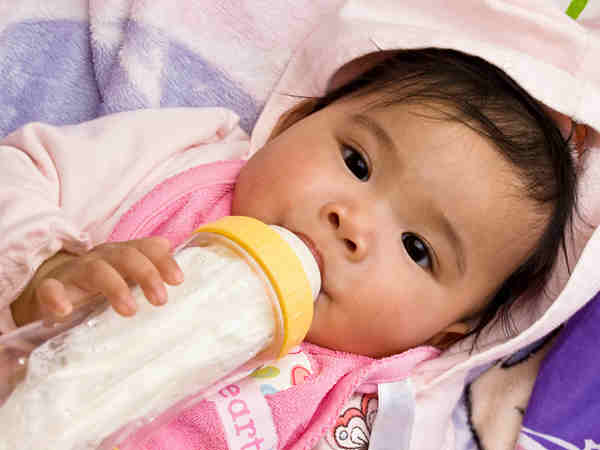
Baby Bottle Basics
Roberta Duyff, MS, RD, FAND
Published January 21, 2014
Baby bottles. Plastic or glass bottles, or disposable bottle bags? The choice is yours. Some parents keep a variety of baby-bottle sizes and styles on hand for different purposes. For example, disposable bottle bags are handy when you're on the go and when washing facilities are limited. For convenience, bottles with disposable liners let you toss away the used liner when the feeding is done. Small-size bottles are perfect for holding 2- or 3-ounce feedings during the first weeks after delivery. Be cautious of bottles with cute shapes; they're often hard to clean.
Try to use plastic baby bottles that are free of bisphenol A (BPA). You can take reasonable steps to reduce exposure to them. Switch to glass baby bottles or to plastic baby bottles and sippy cups labeled BPA-free.
Baby-bottle nipples. They come in many shapes and sizes. Choose nipples that match your baby's mouth size and developmental needs. A baby's comfort and ease of sucking are the criteria to use when choosing a nipple.
There are four basic baby-bottle nipple types: regular nipple with slow, medium or fast flow (the number and size of the holes will determine flow); nipple for very small or premature babies; orthodontic nipple, which imitates the shape of a human nipple during breastfeeding; and cleft-palate nipple. A cleft-palate nipple is meant for babies with a lip or palate problem that keeps them from sucking properly.
Keep bottle-feeding equipment in good condition:
- Discard cracked or chipped bottles that could break and spill formula onto your baby. Toss scratched plastic bottles.
- Replace nipples regularly, as they can become 'gummy' or cracked with age. Check them by pulling the tip before each use.
- Check the size of the opening on new nipples and then periodically as you use them. Formula should flow from the nipple in even drops — not a steady stream. If the milk flows too quickly, your baby could choke, so discard the nipple. If the milk flows too slowly for your baby, consider trying a nipple with more holes, designed for older babies.
When it comes to preparing infant formula and washing bottles, cleanliness is essential! Your baby's immune system isn't fully developed, so he or she is very susceptible to food poisoning from improperly cleaned feeding equipment.
- Use hot, soapy water to wash your hands, work area, measuring utensils, bottles and nipples. If possible, wash bottles right away when they're easier to clean.
- Thoroughly clean reusable bottles, caps and nipples by washing them with hot, soapy water and rinsing them well before each use. Sanitize nipples and bottles in boiling water for two minutes, and then let them air-dry. Or wash bottles, rings and caps in the top dishwasher rack. Look for dishwasher baskets designed to hold bottle parts and to keep them from falling to the dishwasher bottom.
- Remember: The outer "shell" of bottles with disposable bottle bags needs regular washing to destroy bacteria.
- Opening a new can of formula? First, wash the can opener and the can's lid with soap and water; rinse well.